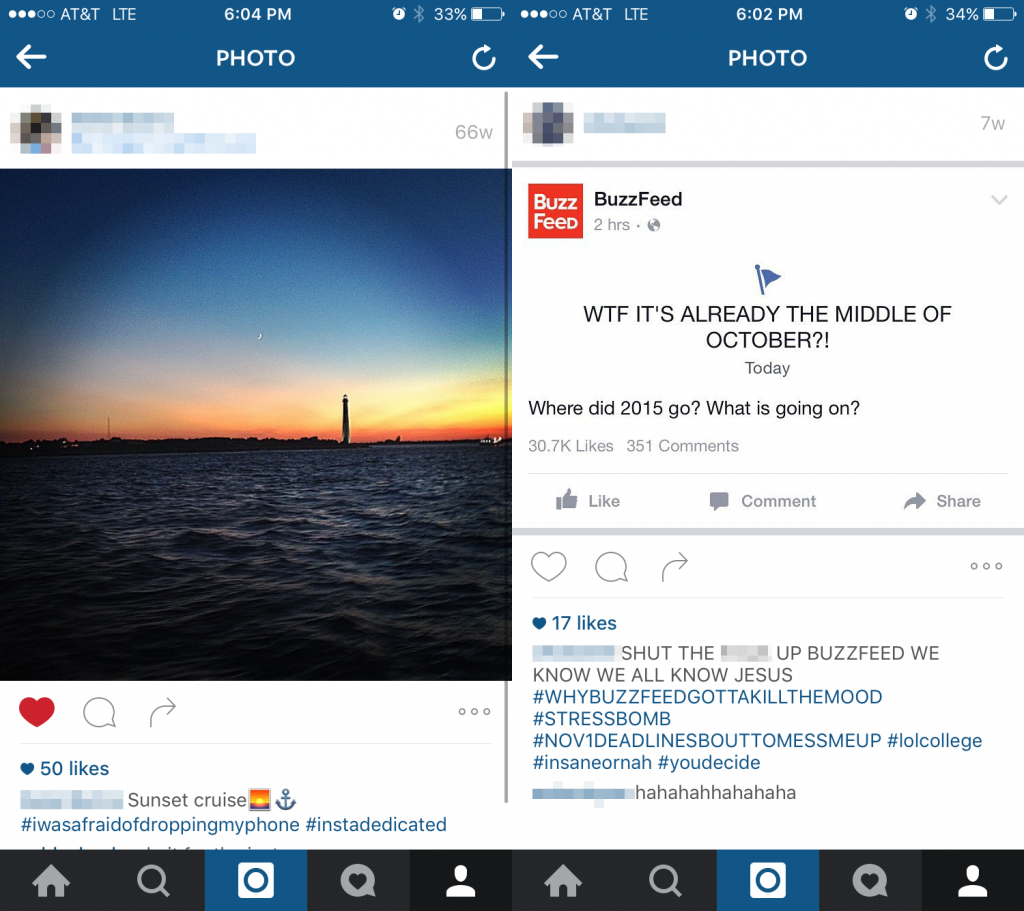I have steadily used social media platforms since I was thirteen, but was always hesitant about Instagram until this past summer, when I finally gave into pressure and made an account. I do enjoy the platform, but was far more intrigued by the fairly young sub-platform dubbed Finsta. For those who do not speak teenage vernacular, Finsta stands for “fake instagram” and has became an ambiguous trend starting a few years ago. I had always been aware of the Finsta culture, taking glimpses through friends’ accounts, and decided to create my own.
Enlisting an army of social media savvy friends, I learned the supposed rules of Finsta. Some include creating an interesting, but very fake username, and not having your face in the profile picture, or anything in your personal about section that could lead outsiders to uncover who is behind the account. Ensuring you switch the button in settings to make it private is most important; everything must be anonymous. And seemingly, everything is far more dramatic. After one week of using a Finsta, what began as fun and lighthearted soon became a constant drone of the same complaints. Around the same time, I had a conversation with a small group of friends, some who use Finsta, others who never have, and a few who deleted it after a while. Our conversation about the purpose behind the platform completely changed the way I use it, and how I look at other accounts on my feed.

I realized, Finsta is great for comedy. If you are a funny person and tell stories interestingly enough to captivate, even the most mundane recounts can cause tears of laughter. The problem is that most people do not use Finsta for this, but rather to complain about homework or to promote their regular Instagram accounts (dubbed “Rinstas”) to garner more likes. Many users even go further, venting on the platform, and posting pictures of themselves frowning or clearly upset. But those types of posts provoke the question: are these depictions of real and valid complaints? Or is it simply a flash of anger or sadness someone feels, posts about, and receives comments filled with false sympathy – which, admittedly, is a cynical idea. However, can sympathy really be genuine behind a screen? Continuing to use the platform with these new questions in mind has been interesting. The amount of negativity flushed into my feedwas overwhelming and uncalled for. So your parents will not buy you a designer purse, or your friend spilled ketchup on your shirt. Not to sound cruel, but why should I care?

Finsta blows situations out of proportion that are small in everyday life. But because one decides to take a blurry photo, the often times negative event is magnified and remembered. The platform also promotes a materialistic society, where people complain about aforementioned purses and shirts. Another problem surrounding Finsta is the misidentification of what the platform really is. Many call it “my public diary,” where they can be their true self for the amusement of their friends. But it is still a filtered recount of people’s everyday lives, who take hours to think of witty captions. Will the disconnect between reality and online continue to grow into this gaping void, or is there a way I can control it in my own feeds and platforms?
Truth of the matter is, social media can quickly become tiring, which is a shame because at the crux it is joyful and fascinating. I am not a naysayer of the internet by any means, but it is important to retain a level of skepticism that allows you to live a happy life outside of these platforms. Instead of injecting our feeds with negativity, we should be more conscious about what we choose to post, and think about the lasting effects this type of culture can leave.
Ana McDade
opinion editor
Special thanks to RHS students for screenshots of their Instagram accounts.


I do not like it, I do not like it one bit! This article is trash. The ramblings of a self proclaimed prophet to speak ill of a time honored tradition. I say nay to this article, and I say nay to this news outlet! Good day madam and I hope you find activities more worth while to fill your days.
We honor ramblings every day and use them as notions for the future.
Why, I also happen to agree with your delightful statement, this frivolous article also betrays them in a very negative aspect.
Thanks for sharing your thoughts about this.
~ Theodore Krueger, PhD